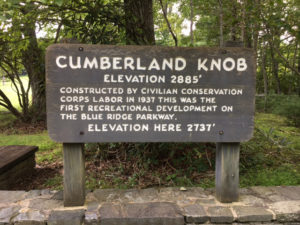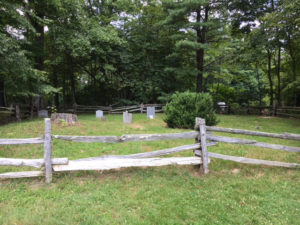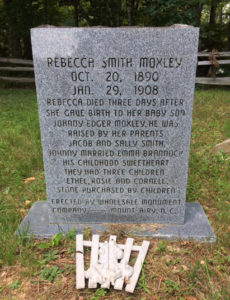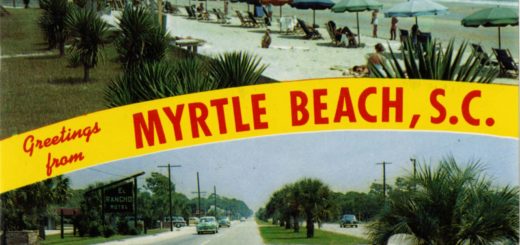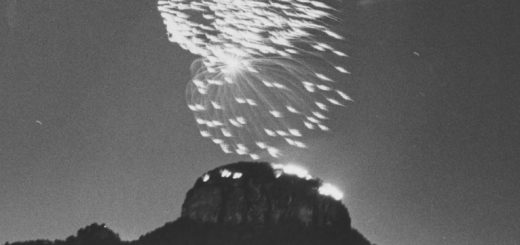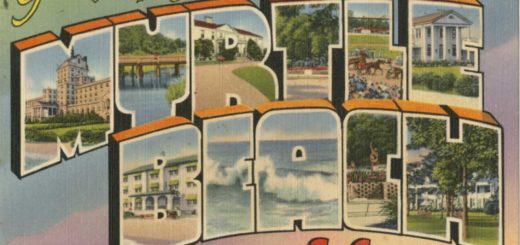The Blue Ridge Parkway was conceived as early as 1906, when Joseph Hyde Pratt proposed a scenic road be built in western Virginia and North Carolina. He called the road “Crest of the Blue Ridge Highway.” Construction began in 1914, but World War I halted the project.
Some of the factors that aided the Parkway movement included the growing popularity of automobiles, which added to the allure of traveling to the mountains. Also, the National Park Service was established in 1916, and the Great Smoky Mountains and Shenandoah National Parks were authorized by Congress in 1926. Funds for the Shenandoah-Great Smoky Mountains Parkway were authorized in 1933. This new highway was called “The Scenic” and construction began in 1935. Congress renamed the project the “Blue Ridge Parkway” in 1936, and it came under the administration of the National Park Service.
Other factors that led to the start of the Blue Ridge Parkway were the Great Depression and high unemployment rates in 1929-1930, plus the formation of the Public Works Administration in 1933. Many public officials, including President Franklin D. Roosevelt, supported the building of a road connecting Shenandoah and Great Smoky Mountains National Parks as a public works project. Stanley W. Abbott was selected as Resident Landscape Architect in 1933.
Early plans for the Blue Ridge Parkway included more than just a road. There were many day-use areas, historic sites, and large recreational parks envisioned so that travelers could learn about the Parkway at a visitor center, hike a trail, picnic or enjoy a meal at a restaurant, or spend the night at a campground or a lodge.
Cumberland Knob Recreation Area opened to the public in 1937, making it the Parkway’s first recreation area. Cumberland Knob had a picnic area and hiking trails. A sandwich shop opened in 1941. This was later changed to a visitor center. During the 1940s Cumberland Knob was the most heavily used recreation area on the Parkway. Today, there are several picnic areas with picnic tables, and some areas have grills. Restrooms are near the picnic areas.
Stanley Abbott, landscape architect, commented in 1958, “…the wayside parks along the Blue Ridge. These are not a mere additive. They were a most important part of the formula for the conservation along the parkway. They are like beads on a string; the rare gems in the necklace.”
The Cumberland Knob Recreation Area also has something that other areas do not have…a cemetery. The Moxley family cemetery is located in a fenced area, and consists of 19 graves. Only a few of the graves have actual gravestones with names, while others are indicated with a plain stone. The cemetery began with the burial of Rebecca Smith Moxley in 1908, and the latest burial was in June 2019.
Some of Rebecca’s story is told on her gravestone, which was erected by her three grandchildren. Here is her story, with a few extra details. Rebecca was married in 1906 in Virginia, at age 15, to James William Moxley, age 28. James was a farmer who owned his farm, and who could read and write. His mother was a Smith before she married, but whether Rebecca was related to James is unknown.
According to local legend, Rebecca was pregnant with her first child and had a premonition that she would die soon after she gave birth. She asked Pack Murphy if she could be buried under an apple tree on his property. Pack agreed, thinking it was unlikely that she would die. But three days after her son was born, Rebecca died. Her son, John Edgar Moxley (1908-1984) is mentioned on her headstone as Johnny Edger Moxley.
The headstone mentions that Johnny was raised by Rebecca’s parents, but John is listed in the 1910, 1920, and 1930 censuses with his father. Perhaps he lived with his grandparents from birth until James remarried. James William Moxley married Ida Lou Lowe in December 1909 and together they had eight children. James and his wife Ida died in 1966 (lived in Forsyth County at the time) and are buried at Fishers Gap Church Cemetery.
The Moxley cemetery is one of more than 75 cemeteries within the boundaries of the Blue Ridge Parkway. Some cemeteries are maintained by the Park and others are cared for by churches or families of the people buried there. Only a few of the cemeteries are visible from the Parkway, while others are more elusive. The cemeteries tell stories of the people who settled and lived in the Appalachian mountains. Many war veterans are buried there, as well as a New York City firefighter who died in the September 11, 2001 terrorist attack on the World Trade Towers.
A team from the Southeast Archaeological Center of the National Park Service mapped the locations of 51 cemeteries and recorded the graves in 42 of them. Using GPS data and paper field maps, a student intern created GIS data for the 541 graves recorded so far. There is a website about the information that has been gathered: https://nps.maps.arcgis.com/apps/webappviewer/index.html?id=526b761bc4fc442f81e3c45fb5ca0855
Photos courtesy of Molly Grogan Rawls.
Stay tuned for the next delicious post on August 8th: Berry Cobbler.

